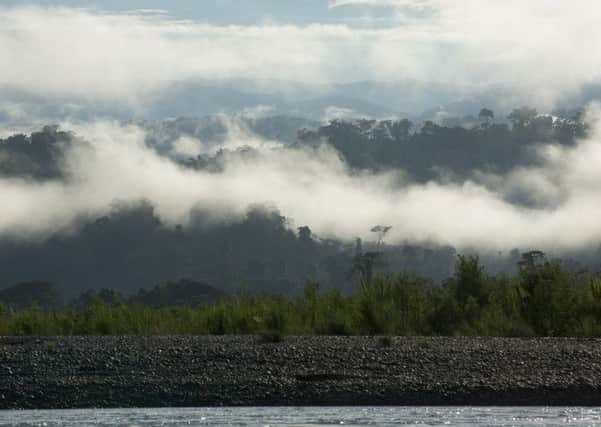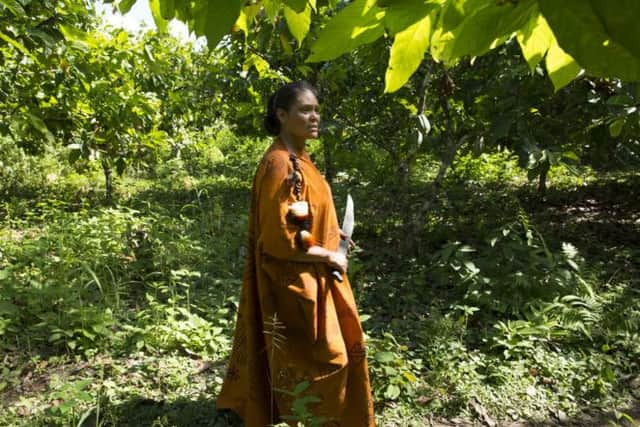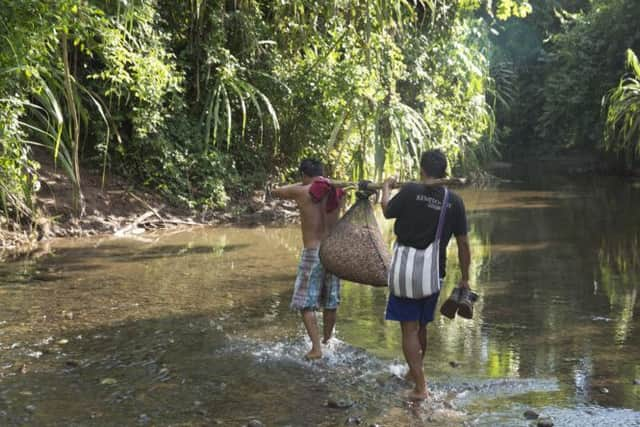Deep roots of a partnership - and the price of tea


In the depths of the Amazon rainforest, 6,000 miles away from home, I’m watching a woman hack away at a tangle of roots and weeds to plant a tiny cocoa seedling on a scrap of land. I have never felt further from Yorkshire, and yet I wouldn’t be here and this cocoa likely wouldn’t be planted if it wasn’t for the county and the support it has given to a rainforest project on the other side of the world.
In 1990 our family business, Bettys & Taylors, launched our Trees for Life appeal, with a pledge, etched in stone, to plant one million trees around the world. When we first started planting trees, it felt like a good way to help the environment while giving something back to the areas we source from. After all, for many of the tea and coffee regions we buy from, trees are essential to lives and livelihoods. With the support of our customers, we helped to plant three million saplings in ten countries including India, Ethiopia, Kenya and Indonesia as well as here in the UK.
Advertisement
Hide AdAdvertisement
Hide AdHowever, when we launched “Trees for Life” 24 years ago, it was impossible to imagine that climate change would become such a cause for concern. And with 18 per cent of the world’s carbon emissions caused by the rapid destruction of the world’s rainforests, we took on the challenge to protect an area of rainforest the size of Yorkshire. This is what led us to start supporting the Ashaninka community of Peru’s Amazon rainforest.


More than 60 per cent of Peru’s territory is covered by the Amazon rainforest, making it the country with the fourth largest area of rainforest cover in the world. The Peruvian Amazon provides invaluable natural resources, water, food and natural medicines; it is one of the most biodiverse regions in the world; and it plays a crucial role stabilising global climate.
These forests are also home to more than 300,000 indigenous people, whose livelihoods and sustenance depend on forest resources.
The Ashaninka are the largest single lowland indigenous group in Peru. The rainforest is not only their source of food and medicines but is also central to their spirituality and social interactions. Ashaninka traditions and their use of forest resources are attuned to the renewal cycles of the rainforest and the preservation of its biodiversity.
Advertisement
Hide AdAdvertisement
Hide AdThe rainforest is essential to the Ashaninka concept of “the good life” – a life that is in harmony with their forest home. However, this way of life is under threat from activities including oil exploration and extraction, mining and logging, often undertaken by outside agencies with little regard for the rights of indigenous people.


Since 2009 we have worked with the Rainforest Foundation UK to help protect these rights.
In this area of Peru cocoa has been one of the keys to forest protection. Cocoa grows naturally in the Amazon, and the Ashaninka people already have a history of harvesting and selling cocoa beans. However, their cocoa has been relatively low quality, produced in small quantities and has often been bought by middlemen who avoid paying fair prices for goods. We’ve helped communities to manage and protect their reserves and the forests in a sustainable way, and to improve the quality and quantity of cocoa that they are growing so it can generate much needed income for healthcare, water and education. The hope is that one day we’ll be able to source a limited supply of Ashaninka cocoa for Bettys – this, of course, means that improving quality is key.
I’ve been lucky enough to visit the Amazon twice now, once when our project was just starting out and also earlier this year – when I was bowled over with the results.
Advertisement
Hide AdAdvertisement
Hide AdCocoa is now a big part of the Ashaninka way of life and the communities have formed their own cocoa cooperative, Kemito Ene (translated as cocoa of the Ene), thanks to our project. Walking through the forest we found hundreds of stunning red, orange cocoa pods and were treated to a taste of the pulpy beans. A good bean can take on the taste of the fruit that surrounds it and with some samples tasting of fragrant flowers, others sweet tangerine – the cocoa seemed to be developing beautifully.
One of the loveliest communities along the river is home to the cocoa demonstration and experimental plots. This is where the cocoa technicians experiment with shade grown and wild cocoa and work with communities to plant and nurture tiny seedlings. Here, we interviewed the oldest member of Kemito Ene, Maximo – a proud Ashaninka man who refers to the forest as his “market” which provides everything they need, from the palms for their houses, to the animals they eat and the medicines they rely upon. He told us: “I work now for my children and want to give them good plots of cocoa so that they can manage them well”.
One woman who has worked tirelessly, not only for her children, but for her whole Ashaninka community, is Ruth Buendia, who we found planting the tiny cocoa seedling on her family’s plot.
Ruth was born and raised along the banks of the Ene river. As a young girl, she experienced tremendous hardship: her father was murdered by the Shining Path terrorist movement, forcing Ruth, her mother and her sister to flee into the depths of the jungle. Ruth eventually moved to Satipo, a nearby town, and then to Lima, the capital, but at seventeen she returned to the forest to find her family. By the age of twenty-seven, Ruth had successfully been elected as the first female President of CARE, the Central Ashaninka of the River Ene, which represents seventeen communities of around ten thousand indigenous Ashaninka people.
Advertisement
Hide AdAdvertisement
Hide AdShe has since worked to defend the territory and lands of the Asháninka by helping increase their legal presence in the eyes of the state, and building agreements to finally acknowledge historically neglected peoples. This year, Ruth was awarded the 2014 Goldman Environmental Prize for a campaign on behalf of the Asháninka people to oppose a large-scale dam that would have flooded thousands of hectares of rainforest land, as well as displacing more than 10,000 Asháninka. Due to Ruth and CARE’s advocacy and championing of indigenous rights, the plans were stopped.
She told us: “We’re not just supporting the forest. The Ashaninka see their territory as integrated with the forest. The forest has biodiversity – plants and animals which are useful to us, we need these plants and animals to survive. It’s not only the forest – it’s our territory and it’s related to our spirituality and culture.”
It’s a sure sign that it is through people that forest stewardship can be most effectively achieved – not only the people living in those forests, but also communities back in Yorkshire who have supported them. While our family business donates £100,000 to our tree projects every year, it is only with the support of our customers and community that we have been able to plant and protect trees for so long. We truly value their involvement and encouragement and it is with their help that we hope for an even more ambitious future for Trees for Life at Bettys & Taylors.